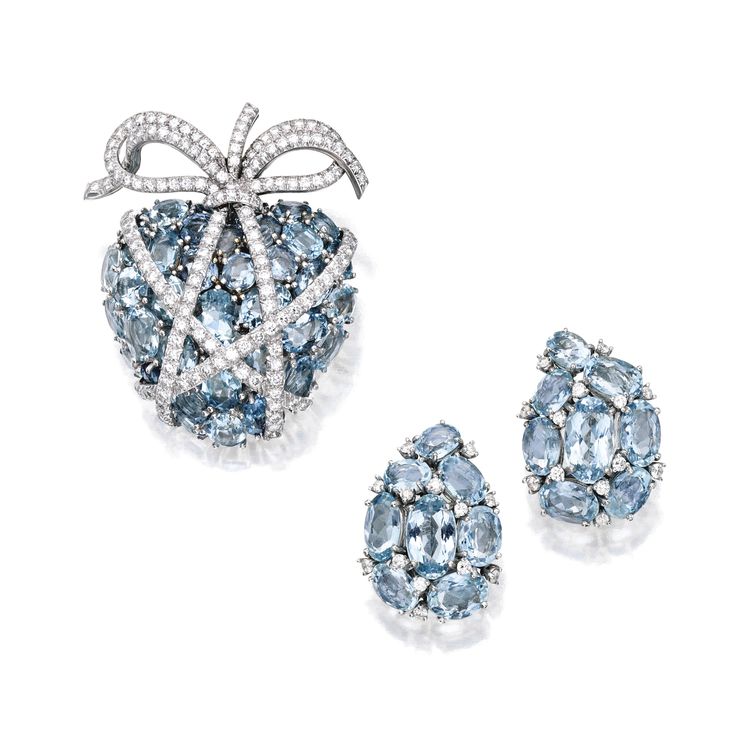
Aquamarine - March Birthstone
14.03.17

Wallace Chan Cloudless Climes ring set with a central 31.13ct aquamarine and two additional aquamarines, diamonds, tsavorites, garnets and sapphires.
With the first glimpses of white sunshine and warm breeze, the spring washed in like a tide, reflecting throughout each facet of the March Birthstone.
An ancient legend tells that the aquamarines emerged from the tears of a beautiful girl who, having lost her lover, was crying into the lake's shore. Her tears dropped into the water, turning them to clean and transparent gems - aquamarines. The serenely coloured aquamarine invokes the tranquillity of its namesake, the sea. In fact, when translated from Latin language, Aqua means water and Marine mean sea. Hence, the subtle azure colours, ranging from greenish blue to blue-green shades. The gemstone has been a cherished talisman among sailors, protecting them against all sorts of misfortunes.
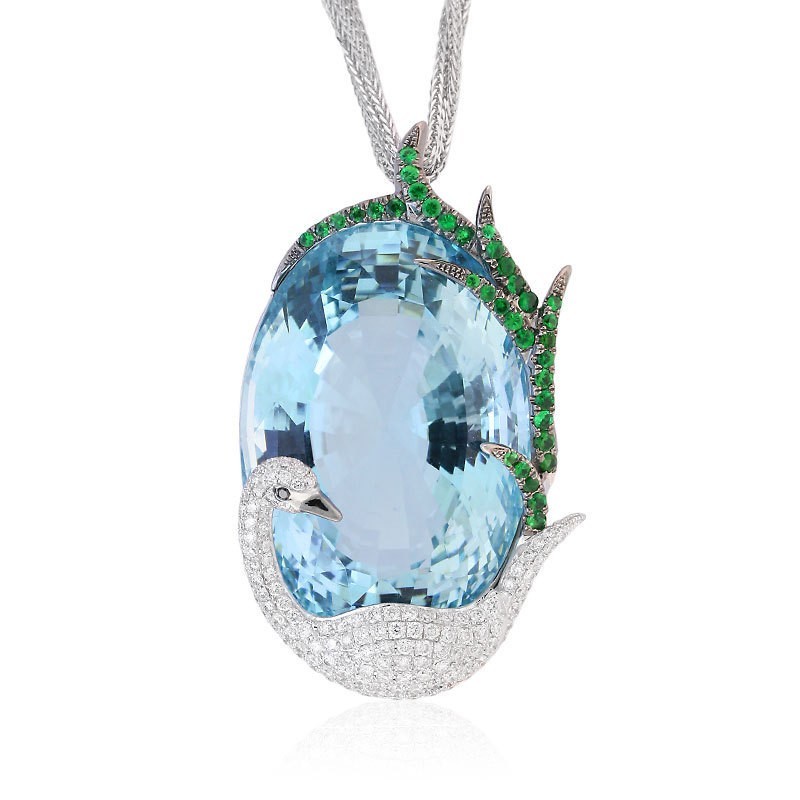
Swan Lake design by Yael designs set in 18k white gold pendant featuring 75.59 carat aquamarine, accented with 0.45 carats of garnets, 0.01 carats of black and 1.32 carats of round brilliant cut diamonds.
Like all Beryls, Aquamarine is found in pegmatites in the form of the long hexagonal prismatic crystals, although broken fragments and water-worn pebbles are also common. Often, these crystals have striations, and rectangular etch marks on the surface. Gemstones usually contain two-phase spiky cavities filled with gas and liquid, as well as thin tubes parallel to the length of the crystal, making up a rain-like appearance. As with other beryls, inclusions of mica and iron oxides are typical, however, the majority of cut aquamarines are free from inclusions.
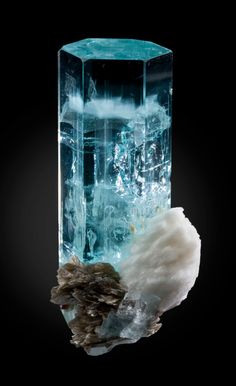
Aquamarine occurs in a well-shaped long prismatic hexagonal crystal.
Aquamarine from Pakistan, courtesy of The Arkenstone, iRocks.com. Joe Budd Photo
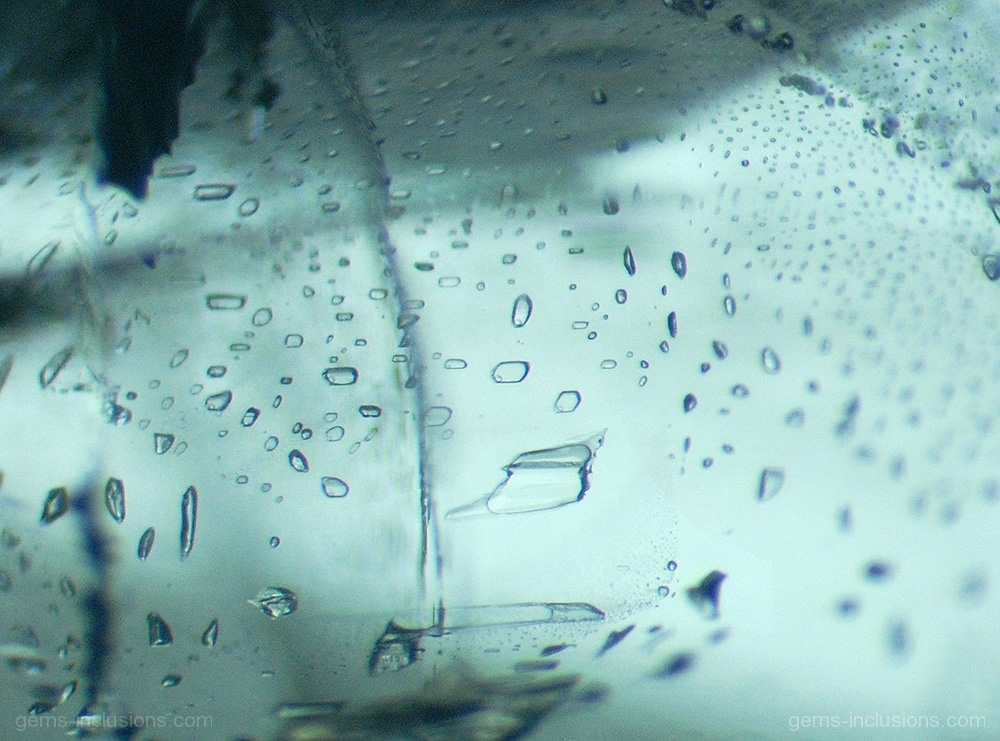
Two-phase inclusions in Aquamarine
The colour of Aquamarines can vary from sea green to an intense sky blue, due to the concentration of iron atoms in the crystal lattice. Larger stones tend to exhibit stronger pigment, and darker blue stones are very valuable. An unusual deeply saturated sapphire blue aquamarine was found in 1917 in the Paiuhy region of Minas Gerais state in Brazil and is known as the Maxixe beryl. Unfortunately, the colour was unstable, in other words, the beautiful blues faded rapidly when exposed to the daylight or heat, turning them into unattractive yellow or rusty-brown. Gemmologist suggest that the discolouration was caused by natural irradiation as well as the traces of copper and high content of alkali metals. Similar beryl specimens appeared in the market around 1973, but such material was artificially irradiated and was thus called Maxixe-type beryl. However, nowadays the most prized intense cerulean Aquamarines are found in the Santa Maria de Itabira mine in Brazil, given the name “Santa Maria” Aquamarines, and premium quality stones also originate from Mozambique in Africa, known as “Santa Maria Africana”. Moreover, gems are found in various other countries including Australia, India, Pakistan, Russia, China, United States, Nigeria and Zambia.
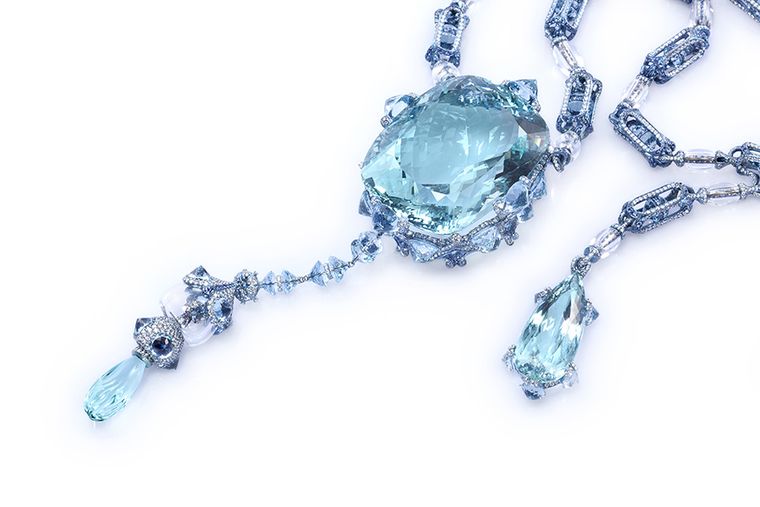
Wallace Chan “A Drop in the Ocean” necklace with 379 carat aquamarine. The small aquamarines are embedded in reverse to highlight the main stone’s natural gleam. Under the main stone a chain of white diamonds, sapphires and crystal hangs and the backside of the necklace is also highlighted with an aquamarine. The necklace structure is made with titanium, decorated with diamonds, crystals and sapphires creating a layer upon layer effect
Aquamarine displays dichroism, showing variable body colours to green to colourless, depending on the direction. It also shows blue-green colour when viewed under CCF. This characteristic can help to identify many imitations of this crystal.
Most Aquamarines reaching the gem market has been subjected to heat, which is considered acceptable in the gemstone industry, although the treatment should always be disclosed to the buyer. The starting material is yellowish, greenish or bluish-green beryl, which results in stable blue colour. The majority of Natural Aquamarines contain green hues or very pale light blue, making the heat treatment a good way to enhance the beauty of the stone. While natural deep bluish shades do exist, they are very rare.
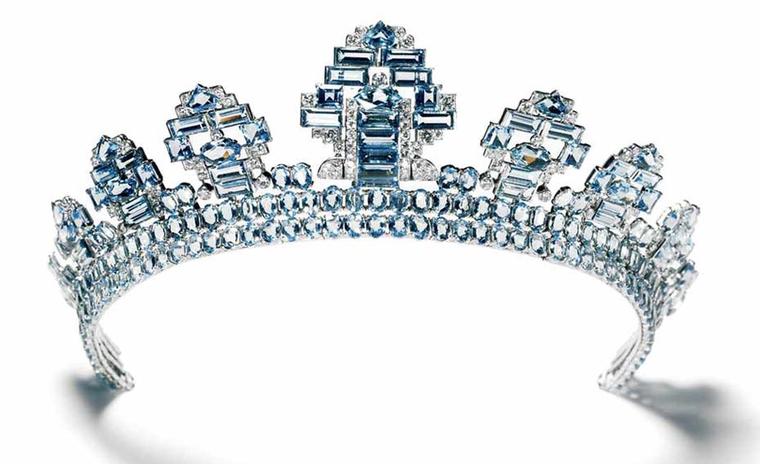
Cartier London designed this Art Deco tiara using round old-cut diamonds and a variety of oval and fancy-cut aquamarine stones set in platinum
Aquamarines are 7.5 on the Moh scale of hardness; a tough mineral, resisting scratching and having an excellent brilliance. Its versatility joined with exceptional beauty make the Aquamarine one of the favourite stones of jewellers, designers and gem collectors across the Globe. Even the British Royal family couldn't resist its charm, accumulating some breathtaking parures. The pale cool colour of the Aquamarine is perfect for most if not all of your spring or summer wardrobe
Because of the serene colour that the gemstone has to offer, it promotes calmness and peace to the beholder, giving a boost of energy and strength for the upcoming month. If Aquamarine is not your cup of tea, there are alternative March birthstones, such as Bloodstone and Jasper, the polycrystalline variety of Quartz.
Bloodstone comes in the dark green colour with spots of red, almost resembling droplets of blood. It was also called the Sun Stone, and later Christ’s Stone, its energy carries the purity of blood and constitutionally speaks of life and birth, vitality and strength, passion and courage. It occurs in different hues, ranging from dark green to greenish-blue or greenish-black, and may be translucent to opaque with a waxy, resinous lustre. The blood-like specks caused by crystals of Red Jasper or iron oxide inclusions, much of the stones of the market appears to consist largely of Jasper. However, some specimens can contain yellow or white inclusions, while others may be entirely green. A variety of Bloodstone with only yellow inclusions are usually referred to as Plasma. In the ancient world, it was considered to be a semi-precious stone and was used extensively as signet seals, in jewellery, as well as being carved into decorative objects. Bloodstone can be found in various locations, like India, Brazil, China, Australia, and the United States.
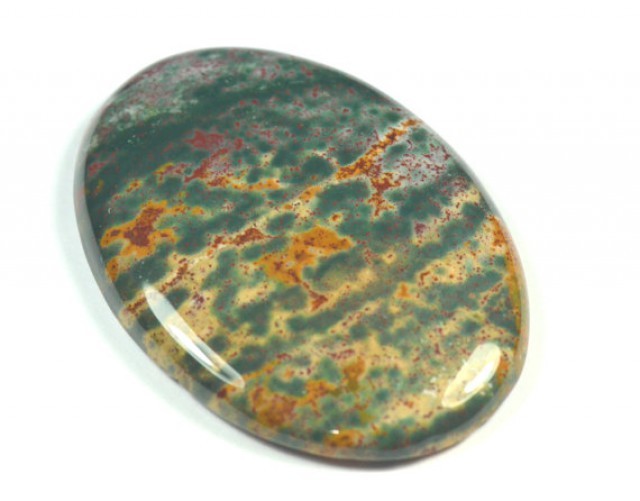
Bloodstone occurs only with the red variety of Jasper, however, the artistry of Jasper is that of Nature itself - golden sunshine, a nighttime sky, poppy fields or a deep green forest, desert sands, the undulating ocean, red rock canyons, sweeping mountains. Each stone is a masterpiece, bold and simple in style, finely-grained in form, with a warm, harmonious energy. Jasper is a dense, opaque, polycrystalline variety of Quartz. It occurs in nodules or as fillings in fissures and may be found all over the world. Jasper is coloured by iron oxide, creating intense earthy tones of red, yellow, brown and green, seldom in tones of blue or purple, and displays beautiful contrasts in its banding, inclusions, “pictures,” and small circular patterns.
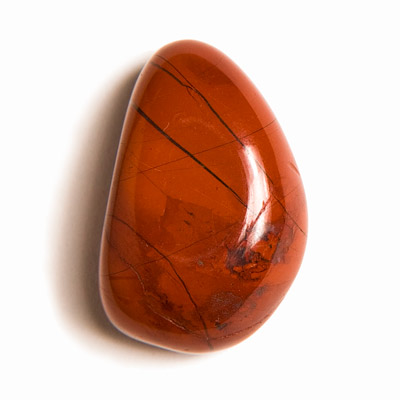
All these gemstones are very versatile starting from their appearance, structure, formation and history, giving a perfect variety to choose and blossom in jewellery this spring.




